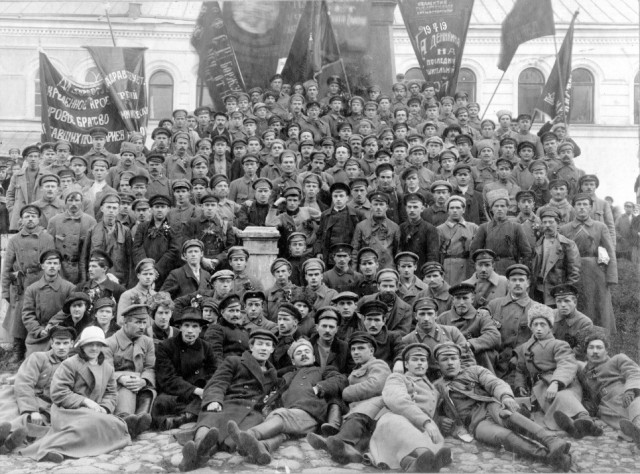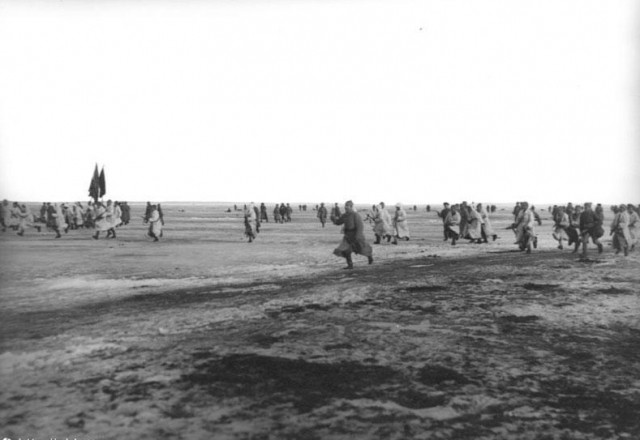No other event in human history has been the subject of more distortions, falsehoods and fabrications the Russian Revolution. We publish here Alex Grant’s complete list of the 10 biggest downright lies about the Bolsheviks and October…
We previously published lies one through five: if you’ve already read these, click here to skip straight to number six.
Those witnessing the treatment of Jeremy Corbyn by the British press have got a flavour of the bile and spite of the establishment. Hugo Chavez and the Venezuelan Revolution have also received such special attention in the recent period. But nothing is so deserving of the hatred of the ruling class as the Bolshevik Revolution of 1917, because only here did the slaves completely overthrow the old order and begin to build a new society without need for lord or master.
The reason for such calumny against the Bolsheviks is plain to see. This event, more than any other, shows that there is another way to run society. That workers and youth, the poor and oppressed, do not have to submit to the diktats of the ‘men in suits’ who profit from their suffering. Countless hours, and billions of dollars, pounds, and euros, have been and are being expended to convince people that nothing good came of the Russian Revolution and there is nothing to be learnt from it for our struggles today. An entire army of so-called ‘experts’ has been mobilized for this special task of maintaining the status-quo.
Watch Alex deliver a talk on the top ten lies about the Bolshevik Revolution at the 2017 IMT World School in Bardonecchia:
On the centenary of 1917, when the world finds itself in a similar impasse, this slander is again reaching a new crescendo.
The volume of falsehoods against the revolution has been truly immense ever since the Soviet workers seized power. Trotsky commented on how “the slanders poured down like Niagara”. The Western press was filled with stories of murder and mayhem from day one. For example, it was claimed that the Petrograd “Bolsheviki” were in possession of “an electrically operated guillotine that lopped off five hundred heads per hour”, and that in Soviet Russia all women over the age of 18 were required to register with the “Bureau of Free Love”, where cultured bourgeois women would be parcelled out to various proletarian husbands on a rotational basis. (Reported in The Bolshevik Revolution by Philip S Foner). Other horrors were described, such as wealthy women being forced to do cleaning, and high-rank businessmen compelled to sell newspapers on street corners in order to survive – oh the humanity!
Lenin was fond of the saying that “one fool can ask ten times more questions than ten wise men can answer.” There is no way that all the lies about the revolution can be answered in a single article, but we are aided by a phenomenon that Trotsky detailed in his History of the Russian Revolution, where he explained why all political slander is essentially “poor and monotonous”. In this regard we can identify the top 10 most monotonous lies about the Bolshevik Revolution in order to arm the reader with the truth that can cut through the distortion and malice. This is an unenviable but necessary task, cleaning out the muck and filth of 100 years: but hopefully the reader will find this useful.
1) Lenin was a German agent!
This is the first and the oldest of the lies against the Bolsheviks. It was the main lie propagated during the July days of reaction where the Bolsheviks were illegalized, Lenin was forced into hiding, and Trotsky was imprisoned. The wave of reaction let loose by this lie led to the Bolshevik printing presses being smashed and even some rank-and-file paper sellers and posterers being beaten and murdered. After a few weeks of being fooled the Russian workers and peasants saw through the fabrication and began to massively turn against those perpetuating this lie as a pretext to continue the bloody world war and the rule of the rich and the landowners. Bolshevik support in the country progressively increased from mid-August onwards.
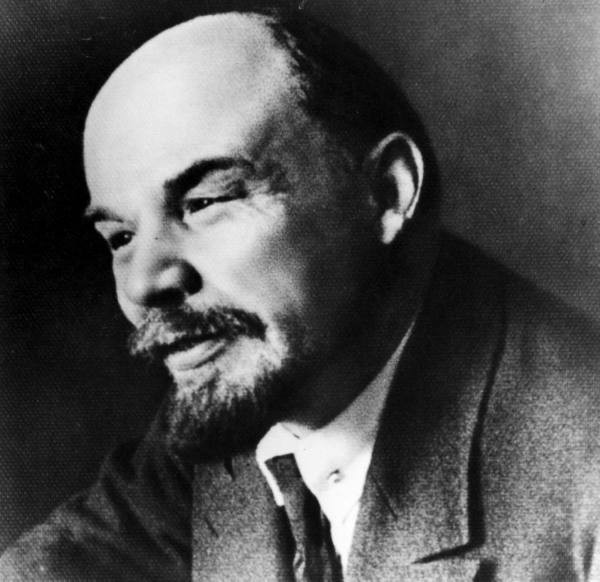
However, the fact that the Russian people saw through this lie 100 years ago has not stopped it from being repeated and re-hashed even up to the present day. On 19 June 2017, practically 100 years to the day after this lie was first concocted, The New York Times published an article repeating it word-for-word. We should commend The Times for their environmentalism, as they are clearly very committed to recycling!
The lie goes something like this. After the February revolution Lenin travelled to Russia via Germany in a “sealed train”. On the way he received funds from the Kaiser and actively worked to sabotage the Allied war effort under the direction of the Germans. But what is the truth?
Yes, Lenin was forced to travel via Germany to Finland in order to reach revolutionary Russia. Lenin was well aware of the political risk he was taking by travelling through Germany, and that is why he insisted on the train being ‘sealed’, with nobody coming on or off for the duration of the trip. But what was his alternative? The Allied powers, French and British imperialism, refused to allow him safe passage over their occupied territory. When Trotsky attempted to reach Russia from New York via steamliner, British secret services had him arrested for a month in Halifax, Canada and only mass protests forced his release. We are sure that the imperialists would have been very happy for Lenin to remain isolated in Switzerland, but that wasn’t really an option.
These slanderers also conveniently forget that Martov, many other Mensheviks, and others in exile, were also forced to take the German route back to Russia. And yet none of these are accused of being German agents as that is not politically convenient.
What of the German gold Lenin was supposed to have received from the Kaiser? To date, despite searching high and low, nobody has been able to find a trace of its existence and all the innuendos have been debunked. If Pravda was receiving foreign sponsorship, it certainly did not look like it. It was smaller and was distributed in far lower numbers at the trenches than the papers of the Liberals and reformists (which genuinely had rich backers).
The New York Times reports that Russian workers were paid ten rubles to hold a Bolshevik placard. However, in 1921 Kadet leader Miliukov reported the going rate was fifteen rubles. Clearly The Times is the place to find a good bargain! And yet no paper trail has been found for these illicit payments that were able to rouse millions on the streets to face down the rifles and whip of police and Cossacks. Nobody has been able to trace the distribution network to get this money to all parts of the Tsarist empire that elected Bolshevik deputies.
The allegation of foreign funding occurs in every mass movement from time immemorial. Such ‘fake news’ was even reported in the protests against Donald Trump’s inauguration who were supposedly paid $3500 a head from a fund set up by Jewish liberal billionaire, George Soros. Trump himself got in on the act and tweeted about “professional protesters”. This tale is reminiscent of Wagner’s opera Das Rhinegold which tells the tale of magical gold that will make the bearer all-powerful. The deposed ruling-class cannot conceive of why the mass population would reject them, and therefore turn to fairytales of otherworldly riches. The reality is much more mundane: Lenin and the Bolsheviks proposed ideas that the population supported. This was the source of their ‘magical’ power.
Of course the German imperialists had their own plans for allowing a train full of radicals and ‘pacifists’ to travel across their territory. They gambled that the dissidents would cause dislocation and weaken the Russian war effort, but they never in their wildest dreams imagined that the Bolsheviks would come to power. Such maneuvers are not unique to German imperialism. However, this particular gamble by the German general staff clearly backfired as events have shown.
On the night of 29 October 1918, a mutiny broke out in the German fleet. Inspired by the Russian Revolution, workers’ councils seized most coastal cities by 7 November. Kaiser Wilhelm II was forced to resign on 9 November. By 11 November the German workers, following the lead of their Russian brothers and sisters, defeated German imperialism and brought an end to WWI by revolutionary means. In this sense it can be said that not only was Lenin not a German agent, but he was the instigator of the downfall of the Kaiser.
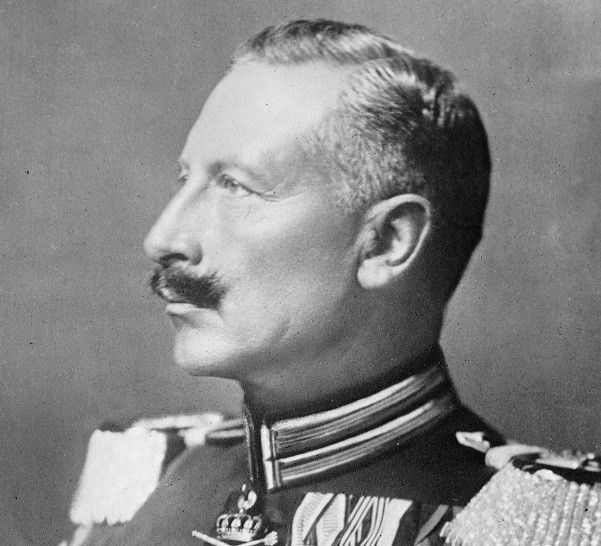
Conversely, it was the Russian Provisional Government and general staff that were the true German agents. Even the Tsar and Tsarina were plotting for a separate peace with Germany prior to the February Revolution. In August, the Russian generals allowed the fall of Riga to the Germans to provide a pretext for the Kornilov coup and to teach the Riga Soviet a lesson at the end of a Prussian bayonet. Similarly, with power slipping through his fingers, Kerensky planned to move the Petrograd garrison to the front and surrender the capital to allow the Germans to massacre the revolutionary workers.
This was the last act that convinced the mass of the soldiers that the Provisional Government was not worthy of their support. The Petrograd garrison disobeyed the criminal order to abandon Petrograd, and instead changed their allegiance to the Soviet.
Here we can see that in the last analysis, for the bourgeois, class always trumps nation. The Russian ruling class preferred to give away its capital city to a foreign power rather than have it fall into the hands of the Russian workers. Lenin also favoured class over nation. But instead of the unity of the bosses, bankers, landowners, and generals, he called for the revolutionary struggle of all workers against their own ruling-class. It was Lenin’s position that overthrew both the German and Russian militarists, and brought an end to the bloody and fratricidal imperialist war.
2) The October Revolution was a violent coup
There is a myth that there was a peaceful revolution in February that overthrew Tsar Nicholas II and instituted a liberal democracy. Unfortunately, the evil megalomaniacs Lenin and Trotsky organized a violent and illegal coup to overthrow democracy and install a totalitarian dictatorship. All the above is an utter fabrication.
Firstly, for liberal historians the term “peaceful” tends to be used very liberally. All except the most rabidly right-wing historians recognize that there was much wrong with the Tsarist regime. This was an autocratic hereditary monarchy, with no democratic elections, no right to free speech, free assembly, or free association, where political dissidents were sent to Siberia, and Jews and oppressed nationalities faced regular murderous pogroms with the support of the regime. It is therefore hard for a liberal historian to argue against the February Revolution, no matter how much he or she may disapprove of the concept of revolution in general.
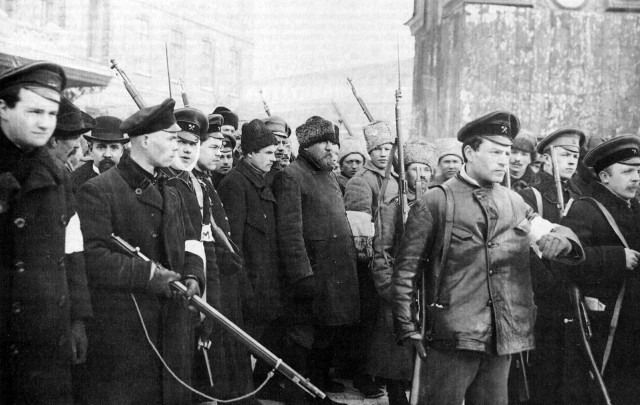
Having been forced to approve of the February overthrow of the Tsar, this revolution is declared ‘peaceful’ by the liberals. The reality is that approximately 1500 people died in February 1917. Most of these were unarmed workers shot down by the regime’s gendarmes, but you can be sure that as the general strike and revolt progressed, these workers armed themselves and, together with mutineering soldiers, inflicted casualties on the other side. In the final days of the regime some of its worst torturers were undoubtedly strung up. Our liberal historians assure us this was all done peacefully.
If 1500 died in the ‘peaceful’ February Revolution, then surely far more died in the “violent” October revolution? The reality is that almost nobody died in the seizure of the Winter Palace that swept up the remnants of the Provisional Government.
Many will have seen the classic Sergei Eisenstein movie about the Russian Revolution, October. The scene in the movie depicting the seizure of the Winter Palace is very exciting; with people running around shooting guns, throwing bombs, falling down and so forth. This scene bears no relation to the actual event, which was more of a police operation. Sadly, there were some lighting accidents in the shooting of October and some members of the crew died. There were more people killed in a film depicting the storming of the Winter Palace than in the actual storming of the Winter Palace!
This event brought Russia out of the war and precipitated the end of the First World War, thereby saving thousands, if not millions. The irony is that those who abhor the ‘violence’ of revolution are often those supporting the violence of war as just and necessary. The Russian workers were sick of the hypocrisy of such people, who only support war for the furtherance of war profits, and the workers were willing to make sacrifices to achieve a just peace without annexations. That is the justification for October, February, and revolution in general. When the majority has decided to make a change, and the minority resists by violent means, the majority has every right to defend itself.
Secondly, while February is labelled a glorious revolution with majority support, October is labelled an illegal coup by a small minority. Let us examine this contention. There are two definitions of coup in the political dictionary. One defines a coup as seizure of power by a minority, usually the military, with the consolidation of a regime without the consent of the mass of the population. The other definition is an “illegal” transfer of power violating the constitution of a given state.
Were the Bolsheviks in the minority? This is not seriously asserted by any primary source after September 1917. It is fully recognized that the overwhelming majority of the urban population supported the Bolsheviks in October. In the countryside, those who did not support the Bolsheviks supported the left Social Revolutionaries who were in favour of all power to the Soviets. The All Russia Congress of Soviets, the only genuinely democratically elected body in the country, returned a decisive majority for Soviet power and a coalition Bolshevik-Left SR government that would give land to the peasants, end the war, and grant self-determination to the oppressed nationalities.
The final proof of the majority support for the Soviets was the victory in the Civil War. The Tsarist army was smashed and the young workers’ state had to build an army from nothing. The Whites had the support of most of the old generals and twenty one armies of foreign intervention. Trotsky took on the near impossible task of building the Red Army. However persuasive Trotsky might have been, even he could not conjure up the human beings willing to fight, to supply, and to feed an army if it was politically unpopular.
The peasantry were willing to donate grain to feed the Red Army because that was the army stopping the landowner from returning and seizing their land. The workers volunteered to fight, die, and make munitions for the Red Army in order to stop the return of the bosses and imperialists. War is the continuation of politics by other means, and by this metric the Soviets were able to mobilize the majority to a decisive victory.
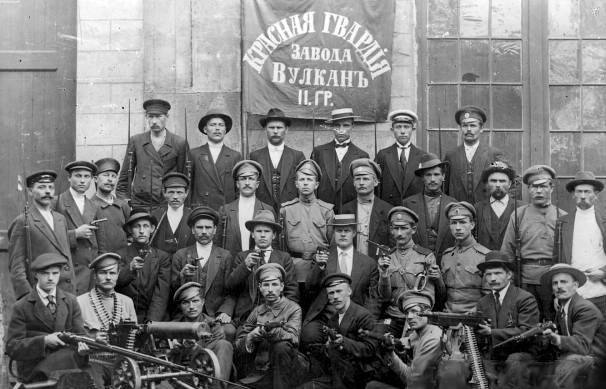
Perhaps the Bolsheviks did have majority support, but this doesn’t matter because they acted illegally and unconstitutionally? Even by this narrow juridical criteria the argument falls down. As explained above, there was no ‘constitutional’ way to remove the monarchy and install a democratic system. The only option was revolution. But what was the nature of the regime that emerged out of February?
The people doing the fighting and dying to overthrow the Romanovs were predominantly the workers in the major cities who convinced the soldiers to join them or remain neutral. These workers and soldiers organized themselves in soviets. ‘Soviet’ is just the Russian word for council, and each workplace elected a representative to this body according to fixed proportions. Military units, made up mostly of peasants in uniform, also elected delegates. Delegates were open to immediate recall. The Soviets were the democratically elected bodies that had the confidence of the mass of workers and peasants that actually fought to bring down the old regime in February.
Looking aghast at the movement below were the Liberals and Conservatives of the Tsarist Duma. This body was fantastically undemocratic in its formation, and had only consultative powers under the Tsar. Voters participated in ‘curiae’ of different social castes so that there was an inbuilt majority for landowners, capitalists, and nobility. The vote of 1 landowner would be functionally equivalent to the votes of tens or hundreds of thousands of workers and peasants in a country of 160 million. The Duma leaders did everything in their power to save the Tsar from the mass uprising of the people who looked to the Soviets.
In the dying days of the monarchy these unrepresentative individuals, mostly wealthy aristocrats, businessmen, and professors, declared themselves “The Provisional Government” despite having no democratic mandate – or constitutional basis – whatsoever. The masses who actually participated in the revolution were sceptical, but unfortunately the Soviets had elected reformist leaders, who gave their support to the bourgeois Liberals. The only democratic mandate of the Provisional Government was that leant to it by the reformist Menshevik and Social Revolutionary Party leaders of the Soviets. The masses didn’t support the Provisional Government, but at the start of 1917 they had faith in the Soviet leaders. Thus began the period of dual power, with the Provisional Government sharing power with the soviet executive. This was the ‘legal’ set up installed by the February revolution.
On 7-9 November 1917, the All Russia Congress of Soviets met in Saint Petersburg. 649 delegates were elected to the Congress, representing 318 local soviets from all parts of Russia. The Bolsheviks gained 390 delegates, and the left SRs 100, creating a decisive majority for withdrawing the mandate for the Provisional Government and declaring all power to the Soviets, the only democratically representative bodies in all of Russia. Therefore, even under the narrow confines of legality and constitutionality, the October revolution passes the test. By any definition, October was not a coup.
3) Without Lenin, Russia would have become a liberal democracy
If only it wasn’t for Lenin, Russia after February would have progressed into a nice, peaceful, democratic, liberal democracy following the model of France or Britain. Here we have another self-serving counterfactual myth that bears no relation to reality.
The first Provisional Government put the Liberal Kadets into power. If people had wanted liberalism this government would have remained stable. But the liberals could not give the people what they wanted, namely: an end to the war, land to the peasants, freedom for the oppressed nationalities, and food for the cities. All this was summed up in the Bolshevik slogan of “Peace, Land, and Bread”.
Due to its inability to solve the crisis in society this government fell and was replaced with a coalition government between reformist socialists and liberals. In turn, the bourgeois liberals were discredited and were replaced by a government almost entirely made up of reformist socialists from the Soviets, with Kerensky at its head. The reformists did everything in their power not to break with the capitalist order of things, but consequently they could not provide the people with peace, land, or bread.
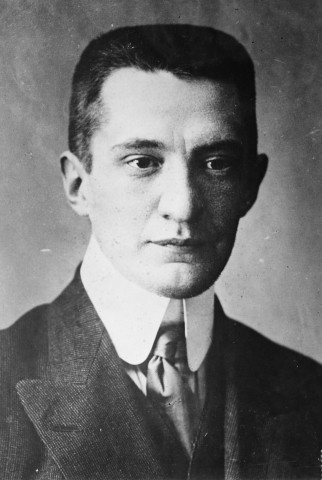
Despite Kerensky being a member of the Social Revolutionary party, traditionally based on the peasants, they did not enact a single word of the SR’s policy on land reform. They could not even convene a constituent assembly to write a democratic constitution, for fear not being able to control such a body. Step-by-step, mass support was moving to the Bolsheviks who called for a break with capitalism and all power to the Soviets.
The ruling class, the landlords and capitalists, could no longer rely on parliamentary maneuvers to maintain their power. All their parties had been rejected by the people. They instead moved to the methods of a fascist coup led by General Kornilov in August of 1917. Kornilov was not just going to massacre the Soviet workers, he would also have broken up the Provisional Government. Kerensky, rightfully fearing for his own head, released Bolshevik prisoners who in turn defeated Kornilov’s coup by mobilising the Petrograd workers and conducting agitation amongst the troops.
From that point onwards the ‘liberal, reformist’ Provisional Government was suspended in mid-air. The mass of workers and peasants looked to the Soviets to solve their problems. The bosses, landowners, and monarchists looked to Kornilovite reaction to teach the people a bloody lesson for being so impudent. The ‘middle-road’ had been tried and rejected by all sides. The only options were socialism or fascism.
But didn’t the Bolsheviks lose the vote for the constituent assembly? It is true that after almost a year of the liberals and reformists refusing to call the constituent assembly that it was actually the Bolshevik-led Soviets that organized this election. The results were 41 percent for the SRs, 24 percent Bolshevik, under-5 percent Kadet, and 3 percent Menshevik. It is notable to compare the vote of the Bolsheviks with the Kadets, the party siding with Kornilov’s generals and the White reaction. The Bolsheviks also gained decisive majorities in the urban centres and two-thirds of the vote amongst the soldiers of the western front.
Unfortunately, the split between the left-SRs, who supported Soviet power, and the right SRs had not been formalized at the time of the assembly elections. Therefore, the right SRs were significantly overrepresented in the party lists and the peasants were not given a genuine choice. The countryside voted SR while all the active sectors of society had moved far past the stage of arms-length parliamentarianism as seen in the imperialist countries. The Soviet system, where elections are direct, delegates are recallable, and there is no division between legislative and executive (i.e., every delegate has a job to do), is far more democratic than the parliamentary system where unaccountable MPs abandon their constituents for years at a time while raking in huge salaries.
When the constituent assembly met on 18 January 1918 it was a sickly hybrid anomaly. The reformists attempted to organize a demonstration in support but few attended. Delegates brought candles and sandwiches in case the power was cut off. At 4am the head of the guard, an anarchist, said, “The guard is tired. I propose that you close the meeting and let everybody go home”. And that was the end of the assembly that nobody was willing to fight for. It was not democratic enough for the workers, who looked to soviet democracy, and too democratic for the capitalist generals, who were preparing to launch the civil war to re-install some form of autocracy.
4) The Bolsheviks committed atrocities in the civil war
War is hell. Two sides attempt to defeat each other by violent means. Civil war is worse. The victorious side gains all, and the losing side loses all. If one side has a monopoly on violence, even if it only has the support of a minority of the population, it can terrorize the majority into submission. The violence of the minority has to be met with defensive violence of the majority if despotism is to be defeated.
The fact remains that anybody conducting a conscientious study of the Russian Civil War will find that the overwhelming preponderance of atrocities were to be found on the sides of the Whites and the 21 armies of foreign intervention.

In the early days, the revolution was in fact too kind-hearted and naïve. The Bolsheviks repeatedly showed magnanimity and let known active counterrevolutionaries go. This is understandable. The victorious revolution seeks unity and wants to move ahead with changing society in peace. Both Lenin and Trotsky said that many lives could have been saved if the revolution had acted more severely and resolutely from the earliest days, and this is undoubtedly true.
The revolution only began to adopt sterner measures in the face of atrocities committed by the counterrevolutionary Whites. The class struggle had broken the formal limits of democracy. The Whites had long ago given up any democratic or peaceful pretense, were using any methods they could – abuse, terror, massacres, pogroms, an orgy of violence – in order to defeat the Reds.
If they really wanted to defend themselves, the Reds had to drop their utopian ideas about peace and employ similar methods. Trotsky explained:
“It would not be difficult to show, day by day through the history of the civil war, that all the severe measures of the Soviet Government were forced upon it as measures of revolutionary self-defense. We shall not here enter into details. But, to give though it be but a partial criterion for valuing the conditions of the struggle, let us remind the reader that, at the moment when the White Guards, in company with their Anglo-French allies, shoot every Communist without exception who falls into their hands, the Red Army spares all prisoners without exception, including even officers of high rank.”
Trotsky would later go on to explain:
“The question of the form of repression, or of its degree, of course, is not one of ‘principle.’ It is a question of expediency. In a revolutionary period, the party which has been thrown from power, which does not reconcile itself with the stability of the ruling class, and which proves this by its desperate struggle against the latter, cannot be terrorized by the threat of imprisonment, as it does not believe in its duration. It is just this simple but decisive fact that explains the widespread recourse to shooting in a civil war.”
In one early atrocity committed by the counterrevolution, the Whites filled three freight cars with the bodies of Red Guards, their frozen corpses “placed in obscene positions” and returned them to starving enemies marked “fresh meat: destination Petrograd”.
The Whites were famous for their abuse of Bolsheviks and Red Army prisoners, or anyone suspected of being a Communist or Soviet sympathiser. A favourite punishment for captured revolutionaries was to mutilate them, gouge their eyes out and remove their tongues before burying them alive.
Denikin’s armies were famous for their pogroms and the orgy of looting, raping and pillaging they unleashed in the areas they occupied. It is estimated that hundreds of thousands of people were killed in this way.
The reader is under no obligation to take our word for it. The American Ambassador at the time, hardly a Soviet sympathizer, stated:
“All over (White held) Siberia… there is an orgy of arrest without charges, of execution without even the pretense of trial, and confiscation without color of authority. Fear-panic has seized everyone. Men suspect each other and live in constant terror that some spy or enemy will cry ‘Bolshevik’ and condemn them to instant death”.
One of the Ataman’s allied with Kolchak and supported by Japanese troops was described by a staff physician as a man with a “diseased brain of a pervert and a megalomaniac affected with a thirst for human blood”.
US General Graves described the behaviour of White troops thus:
“Semyonov and Kalmykov’s soldiers, under the protection of Japanese troops, were roaming the countryside like wild animals, killing and robbing the people, and those murders could have been stopped any day Japan wished. If questions were asked about these brutal murders, the reply was that the people murdered were Bolsheviks and this explanation, apparently, satisfied the world. Conditions were represented as being horrible in Eastern Siberia, and that life was the cheapest thing there.”
It has been said that Kalmykov’s reign of terror drove many moderates to support the Bolsheviks.
Semyonov was even constructing primitive death camps. On 19 August 1919, Colonel Stephanov slaughtered 52 carloads of prisoners, and the following day he reported that he had killed 1600 people. These human slaughter yards continued to operate throughout much of the civil war. Graves wrote:
“I doubt if history will show any country in the world during the last 40 years where murder could be committed as safely and with less danger of punishment than in Siberia during the regime of Admiral Kolchak.”
Kolchak’s capital had dozens upon dozens of bodies hanging dead from telegraph poles, and freight-cars full of victims were slaughtered at execution fields all along the railway.
Finally, in writing about his experiences, General Graves had this to say about the White terror:
“There were horrible murders committed, but they were not committed by the Bolsheviks as the world believes. I am well on the side of safety when I say that the anti-Bolsheviks killed one hundred people in Eastern Siberia, to every one killed by the Bolsheviks.”
The Soviets had to defend themselves against these atrocities. In the middle of a Civil War, no government would allow armed opponents the freedom to organize, agitate, and publish newspapers in the rear of its armies.
No ruling class in history has ever given up its power and position in society without a fight. In the face of the fierce and depraved resistance of the counter-revolution, revolutions throughout the ages have been forced to adopt stern and repressive measures as a means of self-defence. This occurred in the English Revolution, the American Revolution, the French Revolution, the American Civil War, the Russian Civil War as well as in countless other places and times in history.
Mark Twain, in his A Connecticut Yankee in King Arthur’s Court, provided an excellent historical defence of revolutionary terror. Though referring to the Reign of Terror in the French Revolution, it fits perfectly with the Russian Revolution, and indeed as a defence of any Revolution:
“There were two ‘Reigns of Terror,’ if we would but remember it and consider it; the one wrought murder in hot passion, the other in heartless cold blood; the one lasted mere months, the other had lasted a thousand years; the one inflicted death upon ten thousand persons, the other upon a hundred millions; but our shudders are all for the “horrors” of the minor Terror, the momentary Terror, so to speak; whereas, what is the horror of swift death by the axe, compared with lifelong death from hunger, cold, insult, cruelty, and heartbreak? What is swift death by lightning compared with death by slow fire at the stake? A city cemetery could contain the coffins filled by that brief Terror which we have all been so diligently taught to shiver at and mourn over; but all France could hardly contain the coffins filled by that older and real Terror—that unspeakably bitter and awful Terror which none of us has been taught to see in its vastness or pity as it deserves.”
5) The Romanovs were killed in cold blood
Have you ever wondered why you know about the ‘murder’ of the Romanovs but you have probably never heard of the British summary execution of the 26 Soviet commissars in Baku at around the same time? Did you know about the 4600+ peaceful protesters gunned down in January 1905 while delivering a petition to the ‘little father’, Nicholas II? Did you know he was a member of the anti-Semitic Union of the Russian People, he funded it, patronized it, and wore its badge proudly?
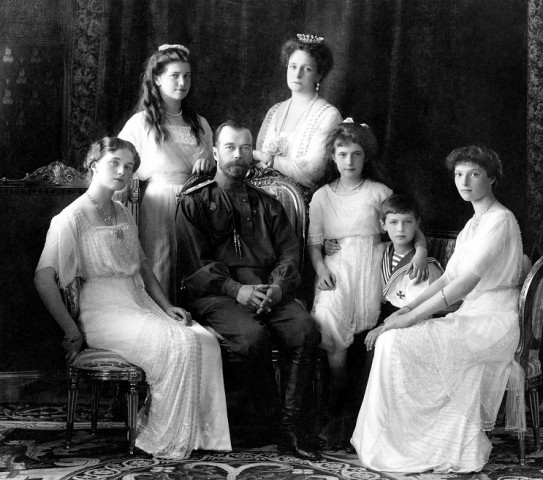
The Union was responsible for organizing murderous pogroms against the Jewish population with the assistance of the Tsar’s secret police and officers. Here rape, torture, burning, dismemberment, every horror imaginable, was inflicted on men, women, children, even infants. In one incident in Odessa 800 Jews were murdered, 5000 wounded, and 100,000 rendered homeless. The Tsar was not ignorant of these atrocities, in fact he wrote about them to his mother as the actions of “loyal people”! In another letter detailing the brutal repression of Baltic peasants, he said, “terror must be met with terror”. Thousands upon thousands of revolutionaries were executed under his regime or died in squalid prisons or Siberian exile. His final crime was ordering his troops to fire directly into the mass of protesters during the February Revolution. Yes, “Nicholas the bloody” had rightfully earned his moniker.
The attempt to present Nicholas as a quiet and humble man by the establishment represents the extremes of hypocrisy. Do they cry over King Charles I or Louis XVI, who brought the bourgeois to power? Do these people cry over the executions of Saddam Hussein, Bin Laden, Ceausescu, or other figures not friendly to the Western powers? Hillary Clinton was even recorded laughing over the death of Gaddafi. We don’t cry over these individuals either – but Nicholas was no better than any of them. But do they cry over the thousands of children killed by Bush and Blair’s bombs in Iraq and Afghanistan, or Obama’s drones in Pakistan? No, these victims are nameless and must be forgotten by the rich and powerful.
Some admit that Nicholas was a tyrant, but object to the execution of his family. Of course that was regrettable, but Nicholas did not pause to do the same to countless Jewish families under his own rule. Or to give a modern example, how is this different from a guided missile strike that kills two insurgents and 30 family members? Trotsky preferred a public trial that would detail the crimes of the Romanov Dynasty for all to see. But in the conditions of civil war that was not possible. In 1918 the Whites were closing in on the relatively comfortable house they were being held at in Yekaterinburg. If the White armies could get hold of any of the royal family it would have become a rallying point for the counter-revolutionary forces who did not hesitate to murder the families of captured revolutionaries.
This otherwise militarily insignificant area was suddenly the object of a White Army offensive that threatened the lives of thousands of poorly defended people. The Red Army did not have the resources to reinforce the area either. Thus, faced with the onslaught of the White Army, the Yekaterinburg Bolsheviks saw the execution of the Tsar’s family as the only way out of a bloodbath. In doing so they also removed what could have become a powerful figurehead for the counterrevolution to mobilise around.
They tell us that the killing of approximately 200,000 men, women, and children in the nuclear bombing of Hiroshima and Nagasaki was necessary because it ‘saved lives and shortened the war’. The reality is that the ending of the Romanov dynasty demoralized the Whites and saved lives by shortening the civil war.
What the capitalists object to is that instead of the imposition of violence by the rich against the poor, the oppressors against the oppressed, here we have an example where the slaves fought back and won. When the Romans defeated Spartacus’s revolt, they lined the Appian way with thousands of crucified slaves as a reminder to others.
Capitalism’s victims are nameless, and number in the millions. To quote Nicholas, sometimes, “terror must be met with terror”. The Bolshevik workers did not turn the other cheek, because they knew that there has never been a time that the meek inherited the earth. The violence of the poor majority to create a new world is essentially defensive and of far shorter duration than the violence of the rich minority to perpetually remain on their thrones. We do not seek violence, but we uphold the right of the majority to defend themselves against the violence of the minority by proportionate means.
6) Trotsky murdered the Kronstadt sailors
The Kronstadt rebellion of March 1921 represents one of the major anarchist critiques of the Bolshevik revolution. Sadly, those yelling the pejorative, “KRONSTADT” have rarely taken the time to study the actual events surrounding the revolt. The reality is that Kronstadt was an unfortunate tragedy, as opposed to being an example of dictatorial action by the anti-democratic Bolsheviks.
The name Kronstadt rightfully deserves pride of place in the annals of the October Revolution. The sailors from the fortress guarding Petrograd harbour were some of the most radical and self-sacrificing elements in 1917. However, the Kronstadters of 1921 were not the same people as 1917. The 1917 sailors were mostly the first to volunteer to fight the White armies in the civil war, and many of them died or found other postings. The 1921 Kronstadters were mainly sons of peasants.
To win the civil war the Soviets had adopted the policy of “war communism”. In essence this involved requisitioning grain from the peasants in order to feed the troops at the front or the munitions workers in the cities. In the first period the peasants were prepared to make this sacrifice as the Soviet government was protecting them from the return of the landowners. But as the civil war progressed, economic dynamics began to overcome political sympathies. The peasants started to demand free trade in grain, and this was the major demand of the peasants’ sons in Kronstadt. A small number of anarchists were present, and anarchist inspired resolutions were passed, but free trade remained the key issue.
The workers’ state began negotiating with the rebels towards the end of winter. Unfortunately, time was running out and there was a danger that the ice causeway to the island would melt. If this occurred it would have the result of surrendering the control of all shipping in and out of Petrograd. Kronstadt could literally starve the proletarian capital during a period of civil war. To allow this to continue would have been criminal negligence and the Soviet government had no choice but to organize an armed assault to take over the island.
The sad reality is that the Kronstadt revolt, and its subsequent suppression, was an unfortunate tragedy of the civil war. With further negotiation it need not have happened. But the Bolsheviks had no choice. Due to political malice the ‘blame’ for this tragedy has been laid at the feet of Leon Trotsky. There is a clear need by the liberals and bourgeois to use anything to throw mud on the clean banner of Trotsky and the Left Opposition to Stalinism. Trotsky subsequently pointed out that he personally had nothing to do with retaking the island, but as head of the Red Army he obviously politically agreed with the necessity of the actions taken by comrades on the ground.
Whatever the wishes of the individual rebel sailors may have been, their course of action would have led directly to the surrender of the island, and the city, to the White armies stationed in Finland. It is notable that in the months following Kronstadt the Bolsheviks realized that war communism had reached its limits and instituted the New Economic Policy (NEP). The key element of the NEP was free trade in grain. The Bolsheviks had previously resisted this measure as they understood it would favour the rich peasants (the ‘kulaks’). This just makes the whole episode that much more tragic. However, that did not stop the anarchists from opposing the NEP despite the fact that free trade was the main demand of the Kronstadters! Anarchists have never been renowned for their consistency.
7) Bolshevism inevitably leads to Stalinist dictatorship
No amount of ink has been spared in proving that Bolshevism inevitably leads to Stalinism and dictatorship. There is no greater slander against the fighters of 1917 than this: to identify them with those who were responsible for betraying, imprisoning, and executing them. There is a river of blood separating Bolshevism and Stalinism. By 1942, practically the entire Bolshevik central committee from 1917 were dead, mostly at the hands of Stalin. If Stalinism was the logical progression of Lenin’s party, why would this have been necessary? Nobody has been able to answer this basic question.
The reason for the rise of Stalinism had nothing to do with some so-called original sin of Leninism. The Bolshevik party of 1917 stood on the basis of not just political but economic democracy. Workers’ democratic control of production united with Soviet grassroots democracy. This is far more democracy than exists under capitalism, which is distorted by big money and gerrymandering in parliament, and is an absolute dictatorship in the workplace.
Unfortunately, Tsarist Russia had an incredibly low level of education. 90 percent of the population were peasants and literacy rates were below 30 percent. In this situation the young workers’ state had to rely upon the old bureaucrats from Tsarist times in order to make society function. This was acceptable in the early days, 1917-1921, when the workers kept the privileged bureaucrats in check. But after four years of world war, and three years of civil war, the workers were tired. The most self-sacrificing elements of the working-class were the first to volunteer to fight, and unfortunately many of these nameless proletarian heroes died in battle.
While formally victors of the civil war, the Soviet economy had been smashed by the blockade and by foreign armies. Most workers just wanted to go home to their families. In this context, the Tsarist bureaucrats began to become independent from the control of the workers. They began to push the workers aside and progressively remove elements of democratic control and accountability.
Stalin was the man who represented this bureaucratic clique. A secondary figure in 1917, he rose to prominence on the backs of the state apparatus that had become more arrogant as workers drifted out of active involvement. Workers making requests of state functionaries were told, “What do you think this is, 1918?” Lenin’s final struggle was to unite with Trotsky against this bureaucratic degeneration and Stalin in particular. Lenin said the following of the state machine:
“[It is like] a car that was going not in the direction the driver desired but in the direction someone else desired; as if it were being driven by some mysterious, lawless hand, God knows whose, perhaps of a profiteer, or of a private capitalist, or of both.”
In another work he said:
“[T]he state apparatus we call ours is, in fact, still quite alien to us; it is a bourgeois and Tsarist hotchpotch and there has been no possibility of getting rid of it in the past five years without the help of other countries and because we have been ‘busy’ most of the time with military engagements and the fight against famine…There is no doubt that the infinitesimal percentage of Soviet and Sovietised workers will drown in that tide of chauvinistic Great-Russian riff-raff like a fly in milk.”
In his last testament, that was subsequently suppressed, Lenin opened up a direct struggle against Stalin, on 24 December 1922 he wrote:
“Comrade Stalin, having become Secretary-General, has unlimited authority concentrated in his hands, and I am not sure whether he will always be capable of using that authority with sufficient caution.”
But 11 days later he added the following:
“Stalin is too rude and this defect, although quite tolerable in our midst and in dealing among us Communists, becomes intolerable in a Secretary-General. That is why I suggest that the comrades think about a way of removing Stalin from that post and appointing another man in his stead who in all other respects differs from Comrade Stalin in having only one advantage, namely, that of being more tolerant, more loyal, more polite and more considerate to the comrades, less capricious, etc.”
The above is more than sufficient to show that Lenin was opposed to bureaucracy in general and Stalin in particular.
The anarchists point to so-called democratic centralism as the reason for Stalinism. This is a bizarre constitutionalist argument that insists that if only we ran a meeting the correct way people would be nicer to each other.
Democratic centralism is the only genuine democracy of action. Its basic precepts are full freedom of democracy in discussion, full unity in action. Democratic centralism is the democracy of a strike: all workers have the freedom to discuss the advisability of going on strike at a membership meeting, then a vote is held. If, for example, 70 percent of workers vote to strike, then 100 percent of the workers must be on the picket line or no strike would ever be successful. Minority rights are protected, but the majority decision decides the course of action.
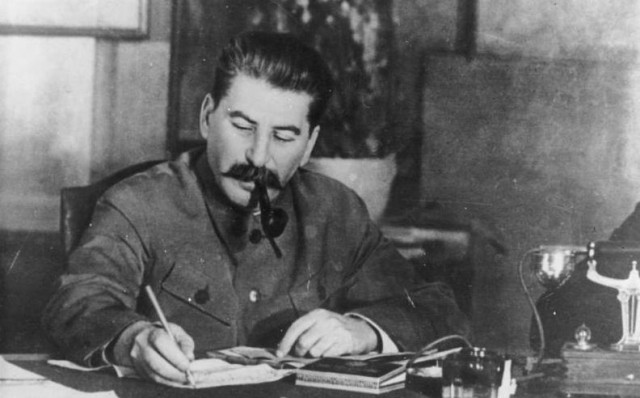
Opposed to democratic centralism is the concept of ‘pure’ anarchism, where nobody is bound to the democratic decisions of the group which splits apart at the first challenge. We saw such paralysis in the Occupy movement. On the other side is the bureaucratic centralism of Stalinism, where there is no free discussion or protection of minority rights. Here again Stalinism is diametrically opposed to Bolshevism.
Ironically, many anarchist organizations with no ‘leaders’ actually find themselves in a situation analogous to bureaucratic centralism. The absence of elected and accountable leaders often means that these roles are replaced by unelected and unaccountable secret leaders: typically the loudest and most forceful person in the room. Decisions are still made, but nobody has the democratic right to challenge them.
“But the Bolsheviks banned opposition parties!” we hear our liberal-anarchist friends shout in unison. This was never the intention of the workers’ state. Unfortunately, every opposition party in the Soviets eventually transitioned over to the White armies or organised terrorist attacks against the workers. No democratic society would allow those using terrorist means to sit in a legislative assembly calmly passing laws. One could imagine the response if Al Qaeda tried to run a parliamentary candidate in London, or for governor of New York.
Marxists stand for multi-party democracy, but anybody picking up a bomb or a gun against the democratic will of the people will quickly lose their democratic rights – as in any other democratic society. Trotsky’s Left Opposition, the genuine inheritors of Bolshevism, were the most vociferous fighters for democratic rights. Subsequently, they were the first to be sent to Siberia, while Trotsky ultimately lost his life to a Stalinist assassin. These fighters against Stalinism are conveniently forgotten by the enemies of the Russian Revolution. It must be noted that in the struggle between Trotsky’s Left Opposition and Stalin’s bureaucracy, the fight between internationalist workers’ democracy and ‘socialism in one country,’ the sympathies of the imperialists were overwhelmingly on the side of the ‘practical’ Stalin.
The lie that Bolshevism leads inevitably to Stalinism is fundamentally an abstract conception. It tells us nothing about why the Russian Revolution and the Communist International degenerated. It ignores the backwardness of Tsarist Russia, the civil war, the blockade and invasion of 21 foreign armies, the failure of the revolution to spread to advanced capitalist countries, and the subsequent isolation of the revolution. There was nothing inevitable about the conditions the Russian workers and oppressed found themselves in. The liberals, reformists, and anarchists, who perpetuate this lie seem to think that ‘bureaucracy’ is some genetic human failing rather than a product of social relations. Bureaucracy is the inevitable result of shortage. The civil war and the inherited low level of technique made sure that the young workers’ state had to contend with plenty of shortages.
There are two methods of managing shortage – the capitalists do this via pricing a good so high that only the rich will receive it, but this method is incompatible with socialism. When there is a shortage in a socialist society the only options are lines and rationing. The only way for a queue to be orderly, and not merely result in the strong pushing all others aside, is to put a policeman on the line. But the policeman has to receive his due, or he will never keep things in order. Such is the economic base of bureaucracy.
That is why advanced technique is essential to achieve genuine socialism. If the German Revolution of 1918-1923 had succeeded then not only would Stalin’s bureaucracy never have usurped power from the workers, but it would likely have begun an irresistible process of world revolution. Advanced German technique united with the raw materials and agriculture of the former Tsarist empire would have shown what a democratically planned socialist economy can truly achieve.
A revolution in an advanced capitalist country like Canada, Britain, France, or the USA, would not have to face the same challenges as the USSR. These countries do not have the low cultural level of Russia in 1917, instead they have millions of graduates who cannot find work. These countries do not have massive shortages and inefficient technique, instead they have factories that sit idle and corporations sitting on billions of dollars of uninvested and unproductive ‘dead money’.
Today, the overwhelming majority of countries have a population that is primarily urban and working-class. Prior to 1945 most countries were largely agrarian. Educational and literacy levels are far higher today. Except for the upper echelons, a high percentage of modern state functionaries are not privileged like in 1917. Civil servants are normal, white collar workers who are frequently unionized and often go on strike. These workers would be more than happy to use their experience for the common good, rather than hold society to ransom like the Tsarist/Stalinist bureaucrats.
Lenin put forward conditions for a workers’ democracy: the election of all officials with the right of recall, no official to receive a wage higher than a skilled worker, the rotation of all bureaucratic tasks, and no standing armed force that can be used against the people. Backwardness stopped these conditions from being enacted in the USSR, but a modern revolution would have no problem putting them into practise. As Lenin said, when everybody is a bureaucrat, nobody is a bureaucrat. Stalinism is not inevitable.
8) Communism killed 100 million people
From newspaper editorials, to internet message boards, the “100 million killed by communism” retort is the preferred way to derail discussion. “You are a socialist? 100 million dead”, “you want a higher minimum wage? 100 million dead”, “you want healthcare? 100 million dead” The right-wing deploy this all-purpose slander whenever they have run out of real arguments!
What is the reality? This claim is based on the Black Book of Communism authored by Stephane Courtois in 1998. It has been widely debunked as biased, using shoddy methodology and hypocritical criteria. Even some of its main contributors critiqued the book saying that Courtois was obsessed with reaching the number of 100 million by whatever means necessary and that this figure cannot be sustained.
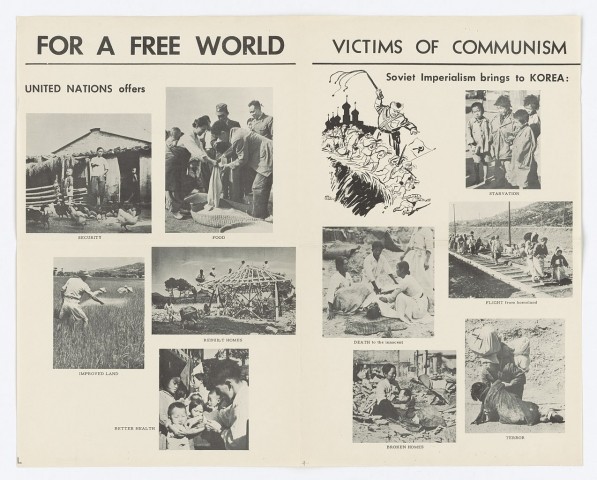
Over 90 percent of the deaths in the Black Book are apportioned to Stalinist or Maoist regimes. We have already explained how Stalinism has nothing in common with genuine Marxism. We do not take any responsibility for the real crimes of these regimes, and we point out that the first victims of Stalinism were the Trotskyists, the genuine inheritors of Bolshevism. We find it abhorrent that the deaths of our comrades are used by reactionaries to stain the banner that they fought under.
Whose responsibility are the deaths during the Russian Civil War? Is the civil war the fault of the mass of workers and peasants, the majority of the population, who wanted an end to WWI, land to the peasants, self determination for oppressed nationalities, and socialism? Or is it the fault of the White generals, the landowners, the bosses, the monarchists, and the 21 foreign armies of intervention, that didn’t accept the wishes of the majority? It is akin to bandits attacking your home, resulting in deaths on both sides: whose fault is that? The reactionaries answer that the homeowners are at fault as nobody would have been hurt if they had just surrendered. One may as well blame Abraham Lincoln for all the deaths during the American Civil War that freed the slaves. Proportionately, per head of population, a similar number of people were killed.
Even the attacks on the Stalinists are hypocritical. For example, the book lays responsibility for 1.5 million deaths in Afghanistan, practically all of the deaths during the Soviet-friendly regime. But it forgets that the CIA armed and funded the Mujahedeen insurgency with rocket launchers and other advanced weaponry in a prolonged guerrilla war. It also forgets that this Mujahedeen included such ‘freedom fighters’ as Osama Bin Laden, and renamed itself the Taliban in the 1990s. So who was responsible for these deaths?
One event that is frequently associated with the 100 million dead is the Soviet famine of 1932-1933, the so-called Holodomor. The Black Book lists 4 million dead in Ukraine and 2 million elsewhere in the USSR. The right-wing nationalist Ukrainian regime categorizes this famine as a genocide, and it is often used for political purposes to bolster the nationalist cause.
Marxists are the last to excuse the Stalinists for this famine, which was the result of Stalin’s criminal policy of forced collectivisation. Trotsky analysed this in his anti-Stalinist masterpiece, Revolution Betrayed. However, neither do we accept the anti-communist victimhood of the Ukrainian nationalists. The truth is that in the 1920s Stalin leaned on the the kulak peasants enriched by the New Economic Policy to defeat Trotsky’s Left Opposition. The Left Opposition was calling for a policy of voluntary collectivisation of the land in order to educate the peasants on the advantages of socialism.
But once Trotsky’s proletarian tendency was defeated the kulaks threatened a return to capitalism, endangering the privileges of the bureaucracy. Stalin did a 180-degree somersault and turned on the kulaks. Instead of voluntary collectivisation he introduced forced collectivisation, with the aim to “liquidate the kulaks as a class”. This insane policy led to rich peasants consuming the seed and livestock, rather than cultivating them, resulting in a famine. Ukraine faced a more acute impact as it was the breadbasket of the Tsarist empire. However the famine also had a significant impact outside Ukraine. While the facts do not support the nationalist claim of genocide, it was the Trotskyists who fought against this famine from the start.
The hypocritical methodology of the Black Book would result in a figure numbering in the billions if it was applied consistently to capitalism. Noam Chomsky, no supporter of Stalinism or Maoism, did this analysis to compare India with China. Due to the lower inequality and better distribution of medical resources in the Chinese planned economy, the number of excess deaths in India alone had reached 100 million by 1979 (and counting!) What of the decimation of indigenous populations in North and South America? The capitalist slave trade in Africa? The impact of imperialism globally?
Winston Churchill himself bears a key responsibility for the Bengal famine of 1943, in which millions died. During the famine, British controlled India was actually exporting food and Churchill was quoted as saying, “I hate Indians. They are a beastly people with a beastly religion.” This is not to mention the millions upon millions dying in wars for profit and imperialist strategic considerations. Over half-a-million deaths in Iraq alone, plus the world wars and constant ‘minor’ wars.
In March of this year, UNICEF estimated that 600-million children face death, disease, and malnutrition by 2040 if current trends continue. In previous reports they have detailed how millions of children die every year by the same preventable causes while the top 8 billionaires own the same as the rest of humanity. By this measure capitalism, imperialism, and colonialism, have produced an entire library of “black books”. It is high time humanity turned the page on this social and economic system that is dripping with blood from every pore.
9) The fall of the USSR proves human nature is capitalist
Witnessing the present state of protracted crisis in the world economy it is quite laughable when the right wing defend capitalism as a ‘natural’ extension of the human condition. Capitalism as a social system has only existed for two or three hundred years, while Homo sapiens as a species has existed hundreds of thousands of years. Are we supposed to believe that humanity was somehow ‘unnatural’ for 99.9 percent of its existence?
Other works have answered this question from a more general philosophical and scientific viewpoint, so we will not repeat those explanations here. The basic argument of the right-wing is that the fall of the Soviet Union was because human beings are naturally selfish and will fall into laziness if they do not have the threat of dismissal and hunger to spur them on. This contention is another unproved assertion outside of time and space that bears no correlation with reality.
Starting from a very low level, the people of the Soviet Union achieved amazing things. This was all despite mismanagement by the Stalinist bureaucracy. People worked damn hard in the USSR, which produced more doctors, scientists, and engineers than capitalist countries, both in absolute and relative terms. This was due to the planned economy. Between 1913 and and 1963, productivity of labour rose 73 percent in Britain, 332 percent in the USA, and 1310 percent in the USSR. Annual growth rates exceeded 10 percent during this period, while capitalism faced the great depression.

The number of doctors per 100,000 people in the USSR was 205, as compared to 170 in Italy and Austria, 150 in America, 144 in West Germany, 110 in Britain, France and Netherlands, and 101 in Sweden. In 1970 there were 257,000 engineering graduates in the USSR, compared with 50,000 in the USA. This resulted in many groundbreaking discoveries, Nobel prizes, and general excellence. It is an abject slander on the brilliant people of the Soviet Union to say that Stalinism fell due to their stupidity or laziness.
So why did the Soviet Union collapse if the people were working so hard and were so smart? The blame lies at the feet of the Stalinist bureaucracy. Trotsky explained that a socialist planned economy needs democracy like the human body needs oxygen. Under capitalism, the market is the check against inefficiency. If a company is being run inefficiently it will go bankrupt and disappear. In a healthy planned economy the check against inefficiency is the democratic control and participation of the workers themselves. If workers see inefficiency they will fix it, if they see a more efficient way of doing things they will enact it. But such democratic management by the workers was anathema to the Stalinist bureaucracy that could not allow anything to leave their tight autocratic control.
Fifty bureaucrats in Moscow could plan basic industrialization in the early period of the Soviet Union, but at a far higher cost than workers’ democracy. However, from the mid-1960s onwards, growth rates began to decline and then stagnate from the 1970s. The economy had become too complex to bureaucratically plan. The sheer weight of bureaucratic mismanagement, nepotism, corruption, and inefficiency, turned from a relative fetter on the planned economy to an absolute brake.
Quotas came down from on high which could not be completed without cutting corners and sacrificing quality. The grey and black economy rose to fill the gaps of bureaucratic waste and stupidity. This economic reality signalled the two-decade decline and fall of the Stalinist regimes. They tried almost everything to get things moving but nothing worked. The only thing they would never try is moving to workers’ democracy for fear of losing control. Therefore the massive creative potential of the Soviet working-class was left to vegetate and remained unrealized.
Instead of moving to workers’ control and a democratically planned socialist economy, the bureaucrats decided to make themselves capitalists at the expense of the rest of the Soviet population. Everything was put on the auction block at bargain basement prices – preparing the way for the current Russian oligarchy. If capitalism was a far more natural system than socialism, surely this ‘return to nature’ would have led to a leap forward of the productive forces? The return to capitalism was an abject disaster. There was a 60 percent reduction in GDP and a 15-year reduction in life expectancy. All the social ills of capitalism returned with a vengeance – alcoholism, prostitution, drug abuse, organized crime, etc. The position of women turned steeply down. This is the legacy of capitalism.
A genuine, healthy, democratically planned economy could unleash the amazing abilities of working-class people that capitalism and Stalinism deliberately suppress. Business administration students are taught to believe that workers are drones, while the fountain of knowledge and inspiration flows from the so-called ‘captains of industry’. But in the real world we see that it is these men and women in suits who have presided over bankruptcy, stagnation, bailouts, and layoffs while still collecting billions in bonuses.
It is the workers on the shop floor who really understand how things are run and how to improve things. It is management that disorganizes production by instituting inefficient split shifts and setting worker against worker. If a worker has a good idea under capitalism, the manager will steal it, take the credit, and then lower staffing relative to the increased efficiency. There is no incentive for workers to give their input when they are alienated from production. In a socialist society when workers contribute it goes to increase leisure time or to improve their local community. Capitalism and Stalinism are united in the belief that the majority of humanity are useless and stupid. Marxists believe that the overwhelming majority have something to contribute to society and it is management or the bureaucracy that are useless enforcers of a stupid, unnatural system.
10) Nothing was achieved by the Russian Revolution
Nothing was achieved by the Russian Revolution, they say! Then why do the hired guns of the bosses and bankers spend so much time saying this? Anybody who thinks things through will realise the falsity of this claim. If nothing was achieved then why treat the experience of October as such a threat? Here we have a country that went from being more backward than the most rural parts of Pakistan, to being the second world superpower. And yet we are told that there is nothing positive to learn from the Soviet Union. This lie should clearly be referenced under the dictionary definition of chutzpah!
We have already detailed some of the amazing technical and economic advances of the Soviet planned economy, despite the bureaucratic fetters of Stalinism. We can add some more. After the Nazi occupation in WW2, which adopted a ‘scorched earth’ policy of destruction, the planned economy bounced back without any Marshall aid from outside. Soviet national income rose 570 percent between 1945 and 1964, compared with 55 percent in the USA that was unscathed by the war. During this period nobody could rival Soviet space technology. Sputnik was the first satellite and Yuri Gagarin the first man in space.
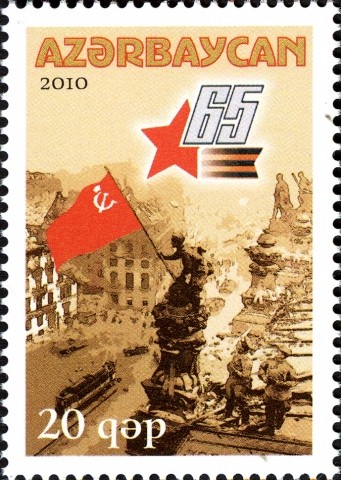
One of the key achievements of the USSR was the defeat of Nazi Germany, which had access to the entire combined production of continental Europe. This is not taught in western schools, but 90 percent of the fighting and dying in WW2 occurred on the eastern front. 27 million Soviets died at the hands of Hitler’s armies.
Churchill and Roosevelt originally planned on letting Germany and Russia exhaust each other and then they would mop up the remains. That is why they did not open up the western front until 1944. The battle of Kursk still remains the largest tank battle in human history, and once the German army was defeated at Stalingrad, the Red Army registered one of the fastest advances in human history. The planned economy allowed the USSR to out-produce all of capitalist Europe when it really mattered. It was Soviet troops who freed the Jews in concentration camps, who liberated Eastern Europe, and who raised the red flag over the Reichstag. If the British and Americans had not opened the western front they would have met the Red Army at the English Channel rather than in Germany. Prior to D-day the main effort of the allies was away from the main theatre of battle, securing their colonies in Africa or the Pacific.
The gains of the Revolution were not just economic, but also social. While women in Britain did not get the vote until 1928, women in the Soviet Union achieved full legal equality from 1918. In Canada women were not even regarded legally as ‘persons’ until 1929! Soviet family law became gender neutral and homosexuality was legalized half a century before the west. For example, Trotsky took his wife’s name and nobody saw that as unusual. Abortion was also legalized. Much of this was unfortunately undone by the Stalinist counter-revolution. Despite the retreat in the 1930s, by 1970 there was gender equality in students admitted to university: a figure significantly in advance of most capitalist countries. The USSR provided free education, healthcare, and childcare, something that the United States has never been able to achieve. Not surprisingly female life expectancy jumped from 30 years in 1927 to 74 years in 1970 and infant mortality dropped by 90 percent.
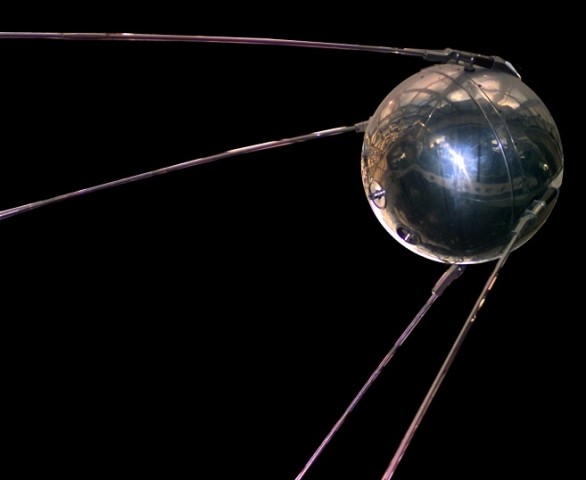
Soviet culture and science flowered in the 1920s. There was an incredible explosion of experimental forms after the revolution. Eisenstein led the way with brilliant cinematic classics. Shostakovich and others revolutionized the symphony, and the Bolshoi ballet is renowned to this day. The USSR became dominant at the Olympics. Theoretical science also lept forward. Theodor Dobzhansky synthesized Darwinian natural selection with Mendelevian genetics. Again tragically this was cut across with socialist realism in the arts, and Lysenkoism in biology. The Stalinist bureaucracy could never allow full freedom to the youth via popular culture, and the CIA attempted to use the Rolling Stones and Beatles against the revolution. But despite the Stalinist censorship Soviet classical arts remained second to none.
Despite incredible material, social, and cultural backwardness, and attacks and sabotage from without and within, the Bolshevik Revolution produced miracles. Just imagine what today’s workers and youth could achieve with a far higher level of culture and education. What is holding down society is production for profit and the capitalist mode of production. Society is currently at an impasse and is lurching from one social, political, and economic crisis to another. We need to blow these fetters asunder in order to free the potential of humanity.
John Reed wrote his classic 10 Days That Shook The World which gave a vibrant account of the events of 1917. In this article we have attempted to answer the top 10 lies that aim to maintain the status quo. Lenin once said that the motor force of history is truth, and not lies. Elsewhere he said that Marxism is all powerful because it is true.
The revolutionary tendency has no need for lies: why would we want to miseducate ourselves about reality? Marxism aims to have a fully rounded out and scientific understanding of social conditions, so we are better positioned to change them. If we lie to ourselves we will only make this task more difficult. Thankfully, more and more workers, and especially young people, are beginning to see through the lies that maintain capitalist inequality. The Russian Revolution still to this day represents the greatest example of how the exploited and oppressed can achieve their emancipation. There is no greater threat to the status quo than the ideas of Bolshevism and the experience of the Russian revolution. Hopefully this contribution will help newly radicalized workers and youth find the answers they need to win the argument against the reactionaries and build a new October, 100 years later, but this time on a far higher level.
